
Roots
The quiet hum of life begins at our very core, within the cellular structures that define us. For textured hair, this foundation is a testament to nature’s profound artistry, a delicate spiral of resilience and strength. Yet, for generations, the journey of textured hair has often been intertwined with a desire for alteration, a longing for a different form.
This desire has led many down a path of chemical intervention, seeking a transformation that, while offering a temporary aesthetic, invites a deeper contemplation of its long-term health considerations. Understanding the true impact of chemical relaxers begins with a gentle look at the very strands themselves, recognizing their innate composition and the intricate dance of science that occurs when they meet powerful agents.
Each strand of hair, regardless of its curl pattern, possesses a remarkable architecture. From its hidden follicle beneath the scalp, a slender column emerges, composed primarily of a protein called Keratin. This protein is fortified by disulfide bonds, strong chemical links that dictate the hair’s natural shape. In textured hair, these bonds are numerous and strategically placed, creating the beautiful coils and curls that defy gravity and captivate the eye.
The enduring strength of textured hair stems from its unique internal structure, a testament to natural design.

Hair Anatomy and Physiology Specific to Textured Hair
The distinction of textured hair, particularly coily and kinky patterns, lies primarily within the cortex, the hair’s central and thickest layer. Here, the keratin bundles are arranged in a unique elliptical or flattened shape, unlike the rounder configuration found in straight hair. This shape, combined with the uneven distribution of disulfide bonds, causes the hair shaft to twist and turn, forming the characteristic curls and coils. The cuticle, the outermost protective layer, consists of overlapping scales.
In highly textured hair, these scales may lift more readily, contributing to moisture loss and a perception of dryness. This inherent structure means textured hair often possesses fewer cuticle layers and a thinner cuticle than straight hair, making it more susceptible to external aggressors.
When we consider the effects of chemical relaxers, we are essentially looking at a process designed to fundamentally alter these inherent structures. The very science behind straightening involves disrupting the natural order of these bonds.
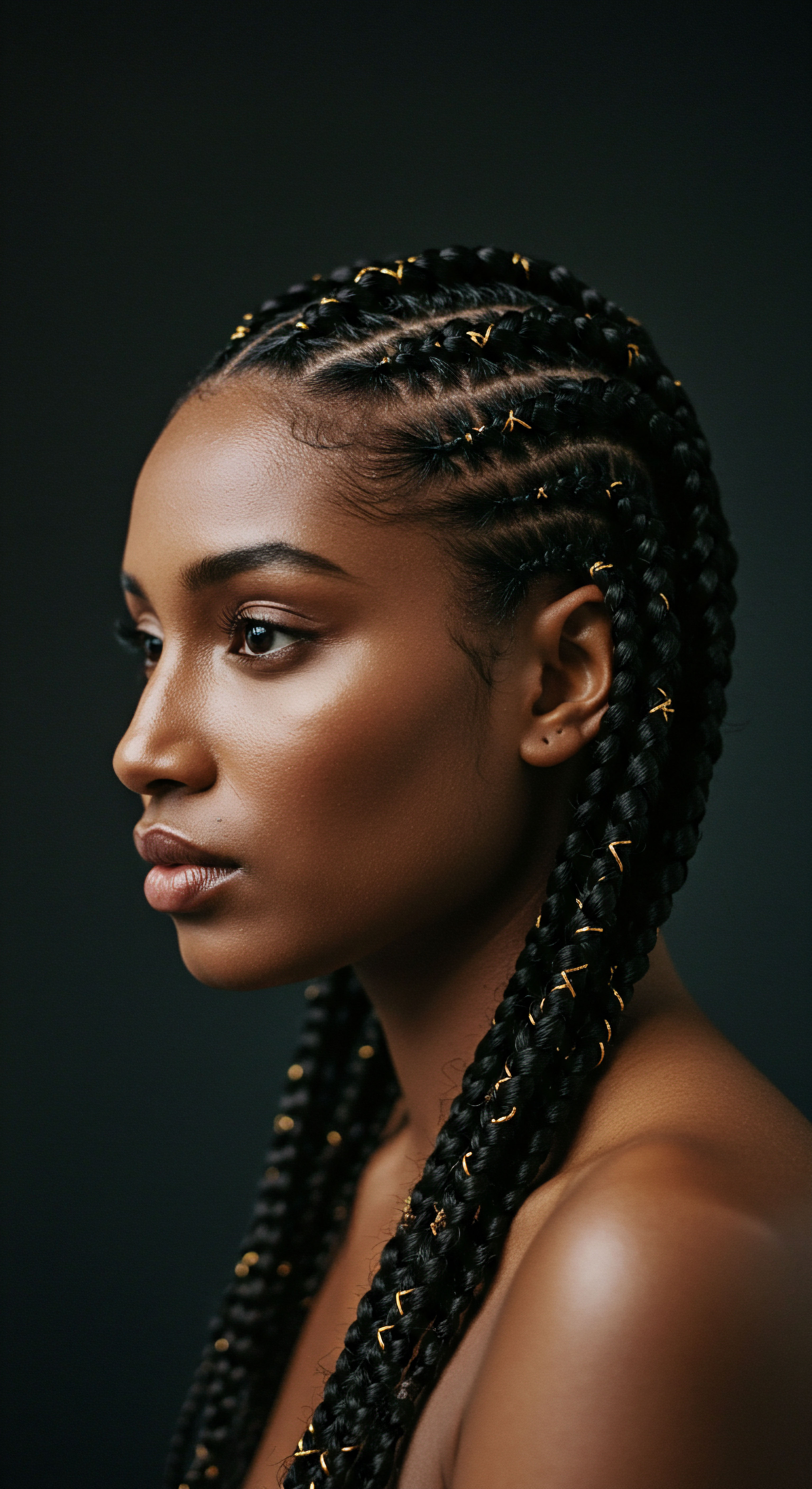
How Relaxers Reshape Hair
Chemical relaxers work by initiating a powerful chemical reaction that breaks the disulfide bonds within the hair’s cortex. This allows the keratin chains to realign, resulting in a straightened appearance. There are two primary types of relaxers that have been widely used:
- Lye Relaxers ❉ These products contain sodium hydroxide as their active ingredient. Sodium hydroxide is a potent alkali, highly effective at breaking down the hair’s protein structure. Its strength means it can achieve significant straightening, but it also carries a heightened risk of chemical burns to the scalp and skin if not applied with extreme care.
- No-Lye Relaxers ❉ These formulations often use calcium hydroxide and guanidine carbonate, which react to form guanidine hydroxide. While marketed as gentler, these relaxers are still highly alkaline and can cause irritation and dryness. They often deposit calcium on the hair shaft, which can lead to a dry, dull appearance over time.
The mechanism of action for both types involves an irreversible change to the hair’s internal framework. Once these bonds are broken and the hair is smoothed, new, weaker bonds form in the straightened configuration. This chemical alteration leaves the hair in a significantly different state than its original, untouched form.
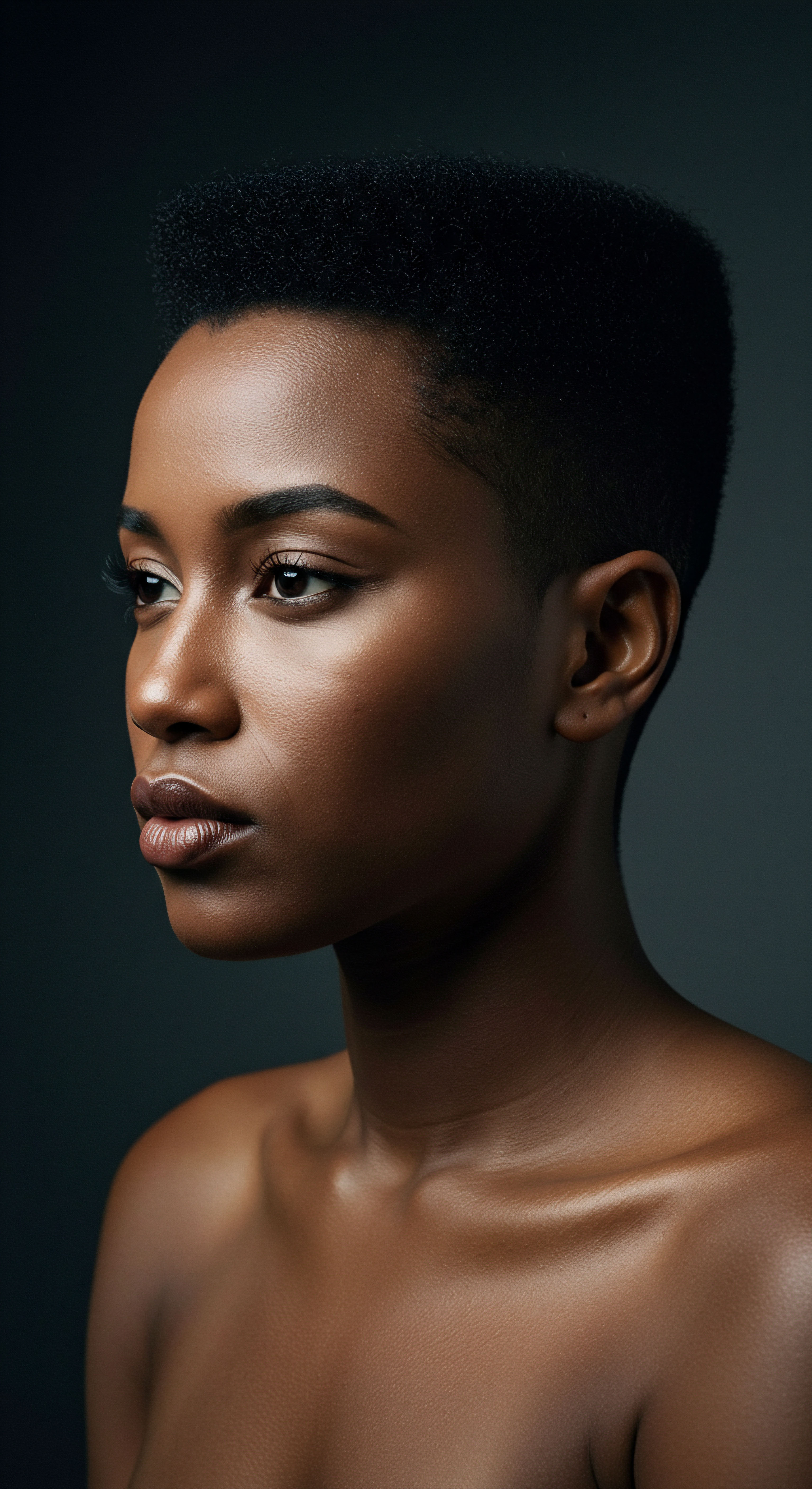
The Essential Lexicon of Textured Hair
Understanding the language surrounding textured hair allows for a more precise and respectful dialogue about its care and considerations.
- Alkaline ❉ Refers to a substance with a pH greater than 7, indicating its caustic nature. Relaxers are highly alkaline, which is why they can chemically alter hair and skin.
- Disulfide Bonds ❉ Strong chemical bonds within the hair’s keratin structure that determine its curl pattern. Relaxers break these bonds.
- Cuticle ❉ The outermost protective layer of the hair shaft, composed of overlapping scales. Its integrity is crucial for moisture retention.
| Hair Component Cuticle |
| Natural State Protective outer scales |
| Relaxer Impact Can lift, leading to dryness and breakage |
| Hair Component Cortex |
| Natural State Contains keratin, disulfide bonds |
| Relaxer Impact Disulfide bonds broken and reformed, altering shape |
| Hair Component Medulla |
| Natural State Innermost core, sometimes absent |
| Relaxer Impact Generally unaffected by chemical process |
| Hair Component Understanding these basic elements clarifies how chemical relaxers physically transform hair. |

Ritual
Stepping into the realm of chemical relaxers is often more than a simple beauty routine; for many, it has been a deeply ingrained ritual, passed down through generations, shaping personal identity and societal perception. The desire for a straightened texture, often rooted in historical and cultural pressures, led millions to regularly engage with these potent chemical formulations. Yet, beneath the surface of smooth strands lies a story of continuous application, meticulous timing, and the immediate, often visible, toll on the scalp and hair itself. This section delves into the practicalities of this ritual, the common experiences, and the direct, observable effects that often accompany the pursuit of straightened hair.
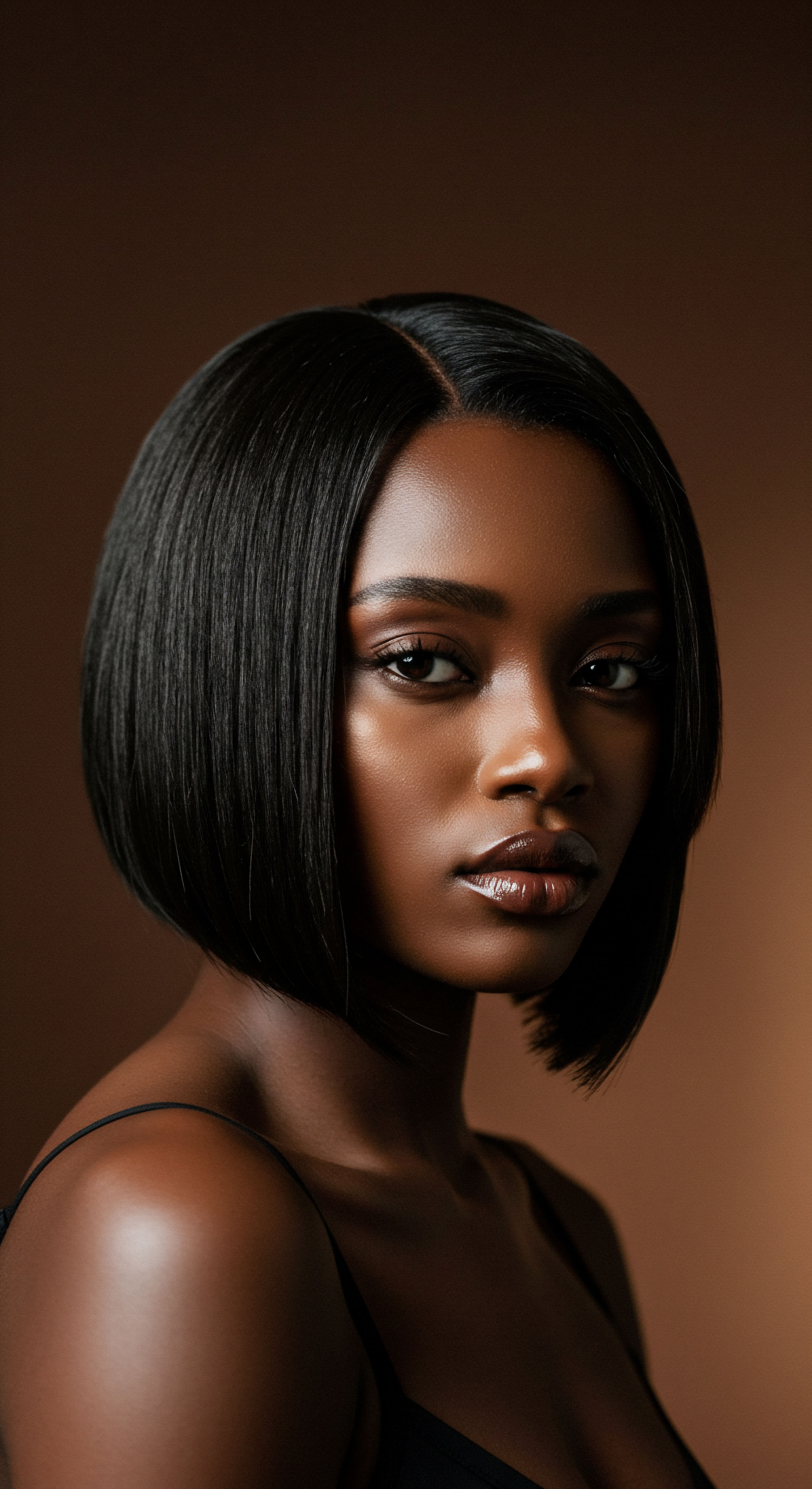
The Application Process and Its Immediate Consequences
The application of a chemical relaxer is a precise, time-sensitive procedure. The creamy mixture is carefully applied to sections of new growth, avoiding previously relaxed hair. The active chemicals begin their work, softening the hair, allowing it to be combed straight. This process is rarely without sensation.
A tingling, burning, or itching feeling on the scalp is a common, almost expected, part of the experience for many. These sensations are direct indicators of the chemical’s caustic nature reacting with the skin.
Scalp burns are a frequent and unfortunate side effect. These can range from mild redness and irritation to more severe lesions and open sores. The alkaline nature of relaxers, particularly lye-based formulas, means they are corrosive to skin tissue. Even “no-lye” relaxers, while perhaps perceived as gentler, still operate at a highly alkaline pH and can cause significant irritation and dryness.
These immediate physical responses are not merely transient discomforts; they open pathways for chemical absorption and can contribute to long-term scalp health concerns. A study by Khumalo et al. in Langa Township, Cape Town, South Africa, reported that 78% of schoolgirls (ages 6–17) and 49.2% of women (ages 18–86) with afro-textured hair used chemical relaxers, with recognized risks such as burns and hair loss.
The immediate sensation of chemical relaxers on the scalp is a stark reminder of their potent, transformative power.
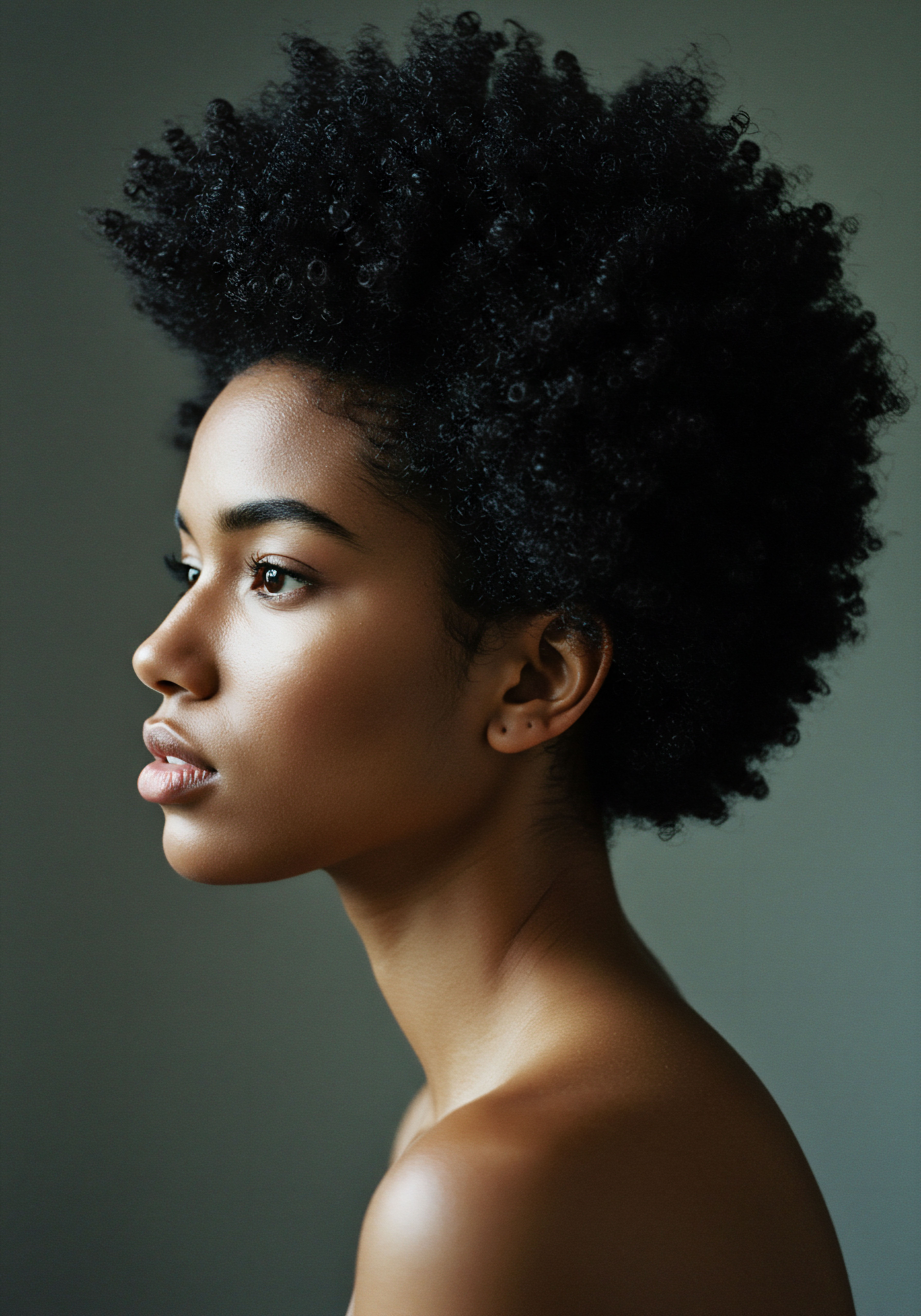
Hair Breakage and Texture Alteration
Beyond the scalp, the hair shaft itself undergoes profound changes. While the goal is straightness, the reality often includes increased fragility. The chemical process inherently weakens the hair’s structural integrity, making it more prone to breakage. This can manifest as:
- Hair Shedding ❉ An increased amount of hair falling out from the root.
- Hair Thinning ❉ A reduction in the density of hair strands, particularly noticeable at the crown or temples.
- Split Ends ❉ The splitting of the hair shaft, indicating significant damage to the cuticle.
- Frizz ❉ Paradoxically, chemically altered hair can become more prone to frizz due to cuticle damage and moisture imbalance.
The delicate balance of the hair’s moisture is also severely compromised. Relaxers strip away natural oils, leaving strands dry and brittle. This dryness can lead to a dull appearance and a rough texture, even when the hair is straightened.

Post-Relaxer Care and Ongoing Vulnerability
The care regimen following a chemical relaxer application becomes critical. Neutralizing shampoos are used to halt the chemical process and restore the hair’s pH balance. Deep conditioning treatments and moisturizing routines are essential to replenish lost moisture and provide temporary structural support. However, this intensive care cannot fully reverse the fundamental changes made to the hair.
The hair remains chemically altered and, therefore, inherently more vulnerable to further damage from heat styling, environmental factors, and even everyday manipulation. Each subsequent relaxer application, typically targeting new growth every 6-8 weeks, adds to the cumulative stress on the hair and scalp. The overlap of relaxer on previously treated hair, even by accident, can lead to severe breakage and damage, creating weak points along the hair shaft.
| Effect Category Scalp Irritation |
| Manifestations Redness, itching, burning sensation, chemical burns, sores |
| Effect Category Hair Damage |
| Manifestations Breakage, shedding, thinning, split ends, dryness, frizz |
| Effect Category Texture Changes |
| Manifestations Loss of elasticity, dullness, altered hair color |
| Effect Category These immediate effects are often the first signals of the chemical's powerful action. |

Relay
Moving beyond the immediate sensations and visible alterations, a more profound inquiry unfolds regarding the enduring echoes of chemical relaxer use within the body’s delicate systems. The pursuit of straightened hair, a deeply rooted practice for many Black women across generations, extends its influence far beyond the visible strands and scalp. Here, we delve into the less apparent, yet potentially significant, long-term health considerations that current research is illuminating. This deeper exploration considers the interplay of biological susceptibility, chemical exposure, and the socio-cultural forces that have historically shaped hair practices.

Chemicals Beyond the Curl
The active ingredients in chemical relaxers, while designed to alter hair structure, are not isolated in their action. These powerful alkaline compounds, along with a host of other chemicals often present in formulations, can gain entry into the body. The scalp, particularly when irritated or burned during the relaxing process, provides a direct pathway for absorption into the bloodstream. This is a critical point, as many of these chemicals are identified as Endocrine-Disrupting Compounds (EDCs) or potential carcinogens.
Among the concerning chemicals found in relaxers are:
- Phthalates ❉ These are often used as plasticizers and solvents, but in hair products, they can act as endocrine disruptors, mimicking or interfering with natural hormones. Diethyl phthalate (DEP) is a common phthalate in cosmetics.
- Parabens ❉ Used as preservatives, parabens also possess endocrine-disrupting properties.
- Formaldehyde-Releasing Chemicals ❉ While formaldehyde itself may not be listed, ingredients like methylene glycol can release formaldehyde gas when heated, a known human carcinogen.
- Lye (Sodium Hydroxide) and Guanidine Hydroxide ❉ These primary active agents are highly corrosive and can cause severe scalp burns, increasing chemical absorption.
The presence of these substances raises questions about their systemic impact, particularly with repeated, long-term exposure.
Beyond hair transformation, chemical relaxers introduce a complex array of substances into the body’s intricate systems.

Systemic Health Implications
The connection between chemical relaxer use and systemic health conditions has become a significant area of scientific investigation. While more research is always warranted, a growing body of evidence points to associations with several reproductive and hormone-related health concerns, particularly within the Black community.

Do Hair Relaxers Influence Uterine Health?
One of the most compelling and concerning links identified is the association between chemical relaxer use and Uterine Fibroids and Uterine Cancer. Uterine fibroids are non-cancerous growths of the uterus, yet they can cause significant symptoms like heavy bleeding, pain, and infertility. Uterine cancer, including endometrial cancer, has seen rising incidence rates, especially among Black women.
A landmark study, the Sister Study, conducted by the National Institute of Environmental Health Sciences, followed nearly 34,000 women. It found that women who frequently used chemical hair-straightening products, a majority of whom were Black women, were two and a half times as likely to develop uterine cancer as those who did not use the products. Further, the Black Women’s Health Study at Boston University reported that postmenopausal Black women who used chemical hair relaxers more than twice a year or for more than five years had a greater than 50% increased risk of uterine cancer. This substantial finding highlights a disproportionate burden of risk for a population that has historically been the primary consumer of these products.
The mechanism is believed to involve the endocrine-disrupting chemicals (EDCs) found in relaxers. These EDCs can mimic or interfere with estrogen, potentially leading to hormonal imbalances that contribute to the growth of hormone-sensitive cancers and fibroids. Elevated estrogen levels, whether from internal production or external chemical exposure, are known risk factors for certain types of uterine and breast cancers.

Other Reproductive and Hormonal Considerations
The spectrum of potential long-term effects extends to other reproductive health outcomes:
- Ovarian Cancer ❉ Several studies have suggested a link between frequent relaxer use and an increased risk of ovarian cancer.
- Breast Cancer ❉ Research, including findings from the Women’s Circle of Health Study and the Black Women’s Health Study, indicates an association between hair relaxer use and increased breast cancer risk, particularly aggressive forms in African American women. A study by Kimberly Bertrand and her team at Boston University found that Black women who used lye-based hair products at least seven times a year for 15 or more years experienced an approximately 30% increased risk of estrogen receptor positive breast cancer compared to less frequent users.
- Early Onset Menarche and Reduced Fertility ❉ Some studies indicate a link between relaxer chemicals and earlier puberty and reduced chances of conception.
The systemic absorption of chemicals from the scalp, particularly when chemical burns or lesions are present, creates a direct route for these compounds to enter the bloodstream and potentially influence various bodily systems.
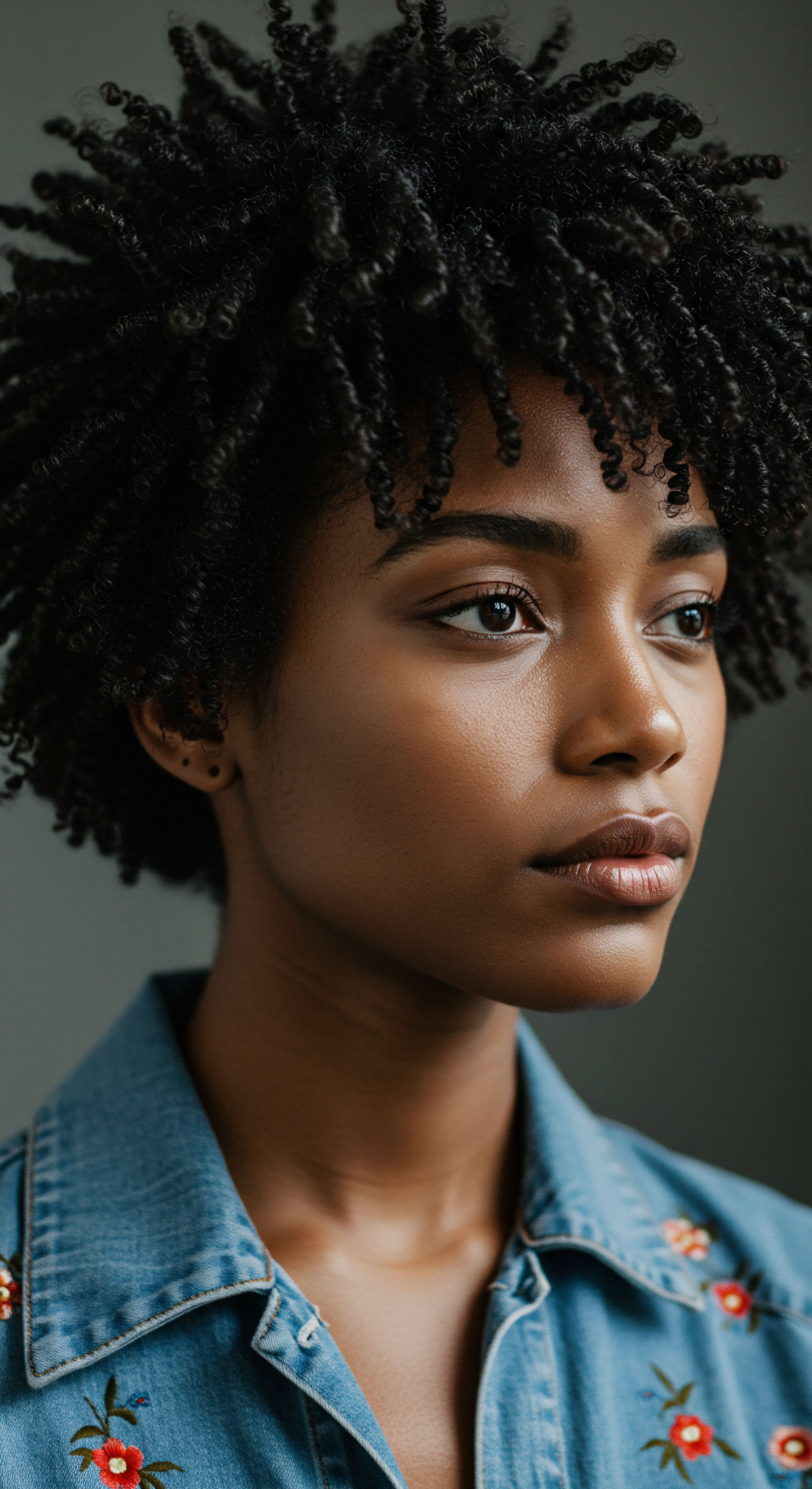
The Cultural Context of Risk
The widespread and prolonged use of chemical relaxers within Black communities is not merely a matter of personal preference; it is deeply interwoven with historical pressures and societal beauty standards. For centuries, Eurocentric beauty ideals often privileged straight hair, creating immense social and economic pressure for Black women to alter their natural hair textures. This cultural backdrop means that the exposure to these chemicals has been both pervasive and long-standing within this demographic.
This historical context underscores why research into the health impacts of relaxers holds such profound significance for Black women. The disproportionate rates of certain hormone-related cancers and fibroids among Black women compared to other racial groups demand a comprehensive understanding of all contributing factors, including environmental exposures from personal care products. The ongoing discussions about potential regulatory actions, such as the FDA’s proposed ban on formaldehyde-releasing chemicals in hair straightening products, highlight the growing recognition of these public health concerns.
| Health Concern Uterine Fibroids |
| Associated Chemicals Phthalates, Parabens, EDCs |
| Key Research Findings Increased risk with relaxer use, especially prolonged/frequent |
| Health Concern Uterine Cancer |
| Associated Chemicals Phthalates, Parabens, Formaldehyde-releasers, EDCs |
| Key Research Findings 2.5x higher risk for frequent users (Sister Study); >50% increased risk for postmenopausal Black women with long-term use (BWHS) |
| Health Concern Ovarian Cancer |
| Associated Chemicals Phthalates, Parabens, Formaldehyde, EDCs |
| Key Research Findings Linked to frequent use, especially in long-term studies |
| Health Concern Breast Cancer |
| Associated Chemicals Phthalates, Parabens, EDCs |
| Key Research Findings Association with aggressive forms in African American women; 30% increased risk for frequent lye-based relaxer users (BWHS) |
| Health Concern Respiratory Issues |
| Associated Chemicals Formaldehyde gas |
| Key Research Findings Asthma attacks, breathing problems |
| Health Concern The scientific literature increasingly points to systemic health risks beyond cosmetic concerns. |

Reflection
The journey of textured hair is one of inherent beauty, strength, and deep cultural resonance. Our exploration into the long-term health considerations accompanying the use of chemical relaxers is not a judgment, but rather an invitation for informed understanding. It is a quiet call to consider the full spectrum of choices available, to honor the body’s delicate balance, and to celebrate the authentic self.
The wisdom we seek in our hair care practices should extend beyond immediate appearance, reaching into the well-being of our entire being. May each choice be made with clarity, kindness, and a profound respect for the heritage and health that define us.

References
- 1. Chemicals of concern in select packaged hair relaxers available on the Kenyan market ❉ an examination of ingredient labels and measurement of pH – Frontiers. 2025 Apr 15.
- 2. Kaur S, et al. Chemical Hair Relaxers Have Adverse Effects a Myth or Reality. International Journal of Trichology. 2013;5(1):2-5.
- 3. Agrawal A, et al. Chemical relaxers and curlers ❉ Hidden danger. IP Innovative Publication. 2021;3(1):23-26.
- 4. The Link Between Hair Relaxers and Ovarian Cancer – Motley Rice. 2025 May 12.
- 5. Chemical Hair Relaxer Side Effects ❉ Related Injuries and Cancers – Weitz & Luxenberg.
- 6. Uncovering the dangers of hair products marketed to Black women, girls. Harvard T.H. Chan School of Public Health. 2024 Jun 15.
- 7. What to Know About the Connection Between Hair Relaxers and Uterine Cancer – Health Matters – NewYork-Presbyterian. 2024 Oct 10.
- 8. Health Impacts of Chemical Hair Relaxers – Drugwatch.com.
- 9. Are Hair Relaxer Ingredients Dangerous? – Bell Legal Group. 2025 Jan 08.
- 10. Frequent use of chemical hair straighteners and relaxers is associated with uterine cancer. Journal of the National Cancer Institute. 2023 Sep 15.
- 11. Davis-Sivasothy, Audrey. The Science of Black Hair ❉ A Comprehensive Guide to Textured Hair Care. Saja Publishing Company; 2011.
- 12. Phthalates in Chemical Hair Relaxers – Atraxia Law.
- 13. FDA Proposes Ban on Chemical Hair Straighteners with Formaldehyde – Boston University. 2024 Oct 10.
- 14. Hair relaxers ❉ FDA may ban certain products in the US – BBC Newsround. 2023 Oct 23.
- 15. How to Repair Scalp Damage from Relaxers ❉ The Power of Scalp Serums – mudmasky. 2025 Feb 06.
- 16. Bertrand KA, et al. Systematic Review of the Epidemiology of Hair Relaxer Use and Hormone-Sensitive Reproductive Outcomes Among Black Adult Women in the United States. Journal of Women’s Health. 2025 Jan 19.
- 17. WCW ❉ Calling Out Danger in Black Hair Relaxers – Houston Fibroids. 2024 Feb 06.
- 18. Formaldehyde releasers found in common personal care products – Silent Spring Institute. 2025 May 07.
- 19. Phthalates in Hair Relaxers Connected to Cancer Risk | Lawsuit Legal News. 2023 Jul 06.
- 20. FDA postpones deadline to remove formaldehyde from hair relaxers – Consumer Notice. 2024 Jul 30.
- 21. Beauty Products and Potential Cancer Risk Among Women of African Descent – NCI. 2023 Feb 28.
- 22. Thousands of Black women are suing chemical relaxer makers over cancer risks – NPR. 2024 May 10.
- 23. The Disturbing Truth About Hair Relaxers – Fibroid Fighters. 2024 Jun 13.
- 24. The oppressive roots of hair relaxer – The Commonwealth Times. 2011 Feb 14.
- 25. Study of Black Women Links Frequent Use of Lye-based Hair Relaxers to Breast Cancer – Essence. 2021 Jul 29.
- 26. FDA Ban on Formaldehyde in Hair Relaxers ❉ What It Means for Black Women. 2024 Apr 26.
- 27. The History of Straightening Afro and Textured Hair – Noma Sana. 2024 Oct 30.
- 28. A definitive timeline of the Black hair journey ❉ 8 historic moments to remember.
- 29. Bell, S. Hair Alteration Practices Amongst Black Women and the Assumption of Self-Hatred. Inquiries Journal. 2014;6(01).
- 30. Harvey V, et al. What Every Dermatologist Must Know About the History of Black Hair. Cutis. 2023 Nov 30;112(5):269-272.
- 31. Textures ❉ The History and Art of Black Hair. Hirmer Publishers; 2020.
- 32. Cavalcante JQ, et al. Effects of chemical straighteners on the hair shaft and scalp. Anais Brasileiros de Dermatologia. 2021;96(3):345-350.
- 33. Press Release ❉ First Large Study of Hair Relaxers Among Black Women Finds Increased Risk of Uterine Cancer – Boston University. 2023 Oct 12.
- 34. Wise LA, et al. Hair Straightener Use in Relation to Prevalent and Incident Fibroids in the Sister Study with a Focus on Black Women. Environmental Health Perspectives. 2025 Jan 14.
- 35. What’s the link between hair relaxers and fibroids? – Patient.info. 2023 Mar 09.
- 36. Is there a Link Between Hair Relaxers and Fibroids? – Coplan + Crane. 2023 Jul 07.